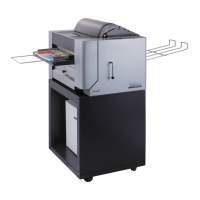AL-MEISTER ALM3222 Instruction Manual
<
Rev.
2>
Page 1 of 63
AL-MEISTER
ALM3222
Instruction Manual
Thank you very much for purchasing the FUJIPLA ALM3222 Auto
Laminator. Due to the possibility of damage and for personal safety
reasons only trained personnel should operate this machine! Please
read through this manual carefully before operation. Please keep this
manual and refer to it whenever necessary.
Ver 1.1 [US]
Ver 2 by Brian Jennett (includes Ver 1.2 [US]) 11/6/13
Rev by Brian Jennett: 11/22/13, 11/27/13, 12/2/13, 12/9/13, 12/17/13, 3/10/14, 3/20/14, 3/27/14,
4/4/14, 6/6/14, 6/26/14, 7/7/14, 8/12/14, 8/26/14, 10/16/14, 1/23/15, 2/26/15, 5/8/15, 6/29/15

